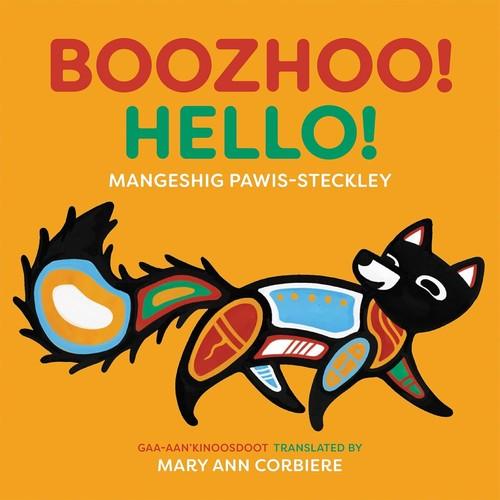Mary Ann Corbiere
2 Reviews
(3)
PS
Translated by Mary Ann Corbiere.
Employing the time-tested baby book refrains “What do you see?” and “What do you hear?”, Pawis-Steckley’s (Ojibwe) upbeat text takes readers along for a stroll in the morning woods, introducing them to thirteen different animals engaged in everyday activities like munching leaves, climbing a tree, digging a hole, and eventually falling asleep. Written in Anishinaabemowin and English and featuring bright, varicolored, minimalist woodland-style illustrations, this is a welcome addition to Native American literature for the preschool set. Includes bilingual author’s and translator’s notes.
Reviewer: Summer Edward
(1)
K-3
Translated by Mary Ann Corbiere.
Illustrated by
Joshua Mangeshig Pawis-Steckley.
A lyrical text written in Anishinaabemowin and English tells about the journey of a seed and of an ecosystem. "A seed is a story you can hold in your hand." The mnoomin seed travels first in the waterways, where it remembers Mayfly, who fed Pike, "who in turn nourished the earth below"; Eagle, who makes sure Muskrat does not eat "more than the field could bear"; and Moose, who "uproots crowding plants" by walking through the water. When the seeds sprout in the water, their leaves provide hiding places for small fish and protection for Duck and her ducklings on shore. Luby's reverent text then describes the traditional method of harvesting what grows. The winnowed grains are danced upon, washed, roasted, and eaten. Some are stored, and some sown for future harvest. Pawis-Steckley's vibrant color palette captures the hues of sunlight throughout the story as well as the lush flora and fauna and the warmth of the human interactions. Notes about the balance of the ecosystem and about the book's use of language are appended.
2 reviews
We are currently offering this content for free. Sign up now to activate your personal profile, where you can save articles for future viewing.





